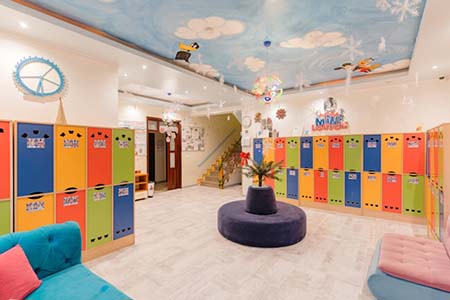Introduction
What Is a Modern Preschool Classroom?
A modern preschool classroom means different things to different people. To me, it’s a space where children have everything they need to grow, learn, and explore. It’s a safe, inclusive, and welcoming place that responds to each child’s unique needs.
Why Is Play-Based Learning Important in Early Childhood Education?
Play-based learning is key in early education. It gives children a strong foundation to explore and learn from the world around them. Through hands-on play, they gain a better understanding of how things work. They also learn social skills, like reading facial expressions and sharing. At the same time, they start learning basics like letters and numbers.
What Are Developmentally Appropriate Practices (DAP), and How Do They Shape Preschool Environments?
Developmentally appropriate practices are teaching methods that match a child’s age, abilities, and background. These methods help children grow by offering the right kind of support at the right time.
Environment & Setup
How Is the Classroom Physically Arranged to Support Play-Based Learning?
The classroom setup supports learning through play. It includes special areas—called learning centers—that encourage children to move, make choices, and work with others.
What Types of Learning Centers Are Included?
These centers include dramatic play, sensory bins, building blocks, art supplies, reading corners, peace corners, and loose parts. Each center helps children develop different skills.
How Is the Classroom Designed to Be Inclusive and Culturally Responsive?
The classroom shows respect for different cultures, languages, and abilities. Children see themselves and others reflected in the books, toys, and decorations. As a result, they feel valued and included.
Curriculum & Instruction
How Does the Teacher Integrate Learning Goals Into Play Experiences?
Teachers plan activities that support learning through play. For example, when I place marbles in the loose parts area, I also add number cards to introduce counting. This way, children learn math while playing.
In What Ways Are Children Given Choices and Encouraged to Explore?
Children can choose from many different activities during the day. This builds confidence and keeps them engaged. When children explore what interests them, they feel more connected to learning.
How Is Inquiry and Curiosity Fostered Through Play?
Teachers help children become curious by asking open-ended questions like, “What do you think will happen if we do this?” or “How can we make it stronger?” These questions lead to thinking, guessing, and testing—skills that build problem-solving and creativity.
Role of the Teacher
What Is the Teacher’s Role in a Play-Based Classroom?
In a play-based classroom, the teacher plays many roles. They guide, support, and observe. Instead of giving answers, they ask questions that spark deeper thinking. By watching children play, teachers learn what each child needs next. This helps them plan better lessons.
How Do Teachers Scaffold Learning While Allowing for Independence?
Teachers give just the right amount of help—enough to support learning but not too much to take over. This is called scaffolding, and it matches a child’s Zone of Proximal Development (ZPD)—the space between what they can do alone and what they can do with support.
How Do Teachers Observe and Assess Learning in a Developmentally Appropriate Way?
Teachers use real-life moments to understand how a child is growing. Instead of giving tests, they watch, listen, and take notes during play. These notes help them make learning plans for each child.
Social-Emotional Development
How Does Play Support Social-Emotional Growth?
Play helps children learn how to express emotions, understand others, and bounce back from challenges. It can even help them heal from tough experiences. For example, after the Tubbs Fire in Santa Rosa, children at the Children’s Museum used pretend play to act out firefighting and cope with trauma.
Source
Play also helps children prepare for scary things like surgery or dentist visits. By pretending, they work through fears in a safe, comforting way.
Real article
How Are Peer Interactions and Cooperation Encouraged?
Teachers create chances for children to play together. They may group children in small teams or plan shared activities. These moments teach cooperation, listening, and teamwork.
How Are Conflicts and Problem-Solving Approached?
Teachers model how to talk through problems. They help children use calm words and take turns. Role-playing and “I feel” statements are common tools for helping kids solve disagreements with kindness.
Family & Community Engagement
How Are Families Included in the Learning Process?
Families are welcome partners in a child’s learning. Teachers share news, invite parents to events, and welcome volunteers. When families take part in regular play—both at home and school—it builds trust and strong connections.
How Does the Modern Preschool Classroom Reflect the Cultures and Values of Its Families?
The classroom includes books, art, music, and toys that reflect the children’s home lives. This shows respect for family traditions and helps children feel proud of who they are.
What Strategies Are Used to Communicate Progress and Activities With Families?
Teachers share progress through photos, journals, newsletters, and meetings. These updates keep families informed and allow them to support learning at home.
Conclusion
What Are the Long-Term Benefits of a Play-Based, Developmentally Appropriate Preschool Experience?
Play-based and developmentally appropriate classrooms give children a strong start. They learn how to think, feel, and grow in a balanced way. These early years build confidence, curiosity, and lifelong learning habits.
How Does This Approach Prepare Children for Kindergarten and Beyond?
Children leave preschool ready for Kindergarten with solid social, emotional, and learning skills. While academics are important, skills like working with others, sharing, and managing emotions are just as valuable. These tools set the stage for long-term success in school and life.

